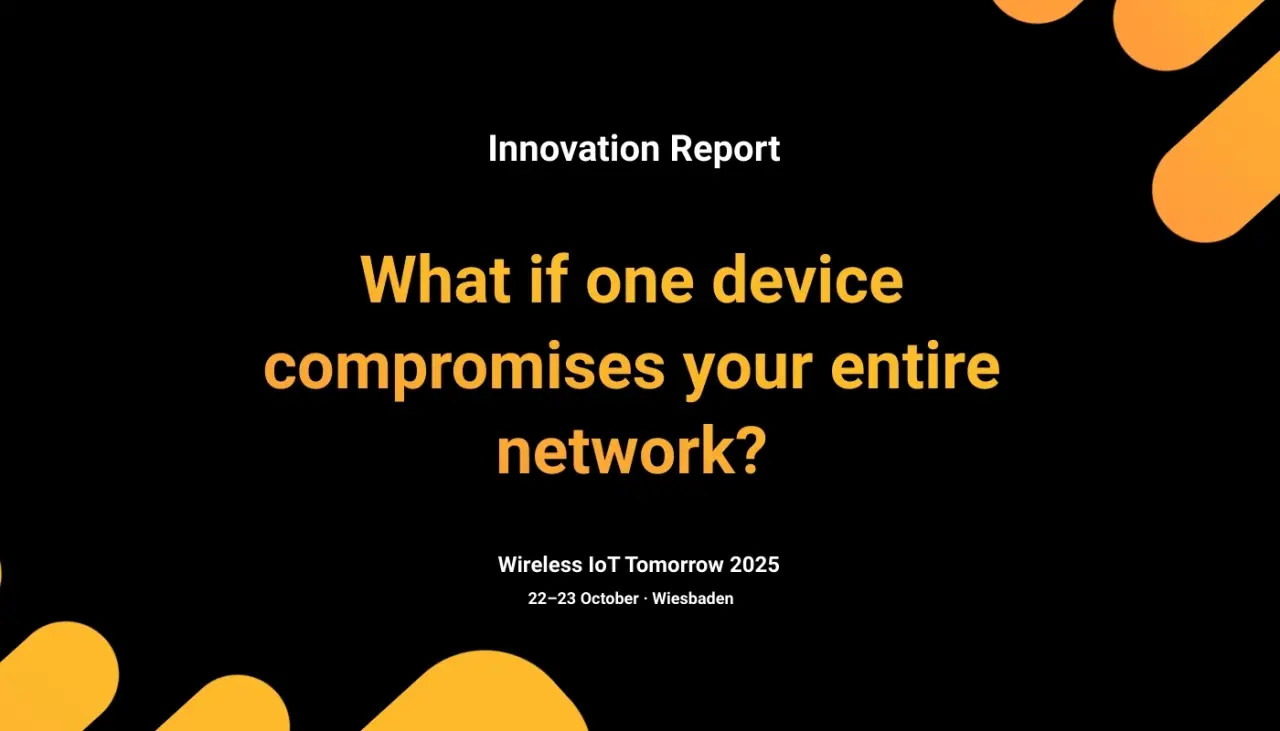
Introduction: Security Isn’t a Feature — It’s the Foundation
System designers and engineers know: in the world of connected devices, security cannot be patched in later. It must be part of the architecture from the very first schematic.
This week’s Innovation Report dives deep into the urgent necessity of end-to-end security in IoT — not as an added layer, but as a critical design principle. In a climate where ransomware, data breaches, and infrastructure sabotage are no longer theoretical risks, the stakes are higher than ever.
1. The Security Blind Spot: Where Most IoT Systems Fail
The average connected system has dozens or hundreds of devices, communicating over various protocols, across vendor ecosystems, clouds, and mobile gateways. The result?
A fragmented attack surface. One insecure node compromises the entire system.
Many companies mistakenly believe that encryption at the cloud level or secure apps are enough. But attackers don’t go through the front door — they look for misconfigured devices, unprotected firmware, or outdated keys buried deep in the network.
For system architects designing healthcare devices, industrial automation networks, smart logistics chains, or infrastructure solutions, this should be a wake-up call.
2. What “End-to-End” Really Means in 2025
Security in 2025 means:
- Secure-by-Design Hardware: Chips with built-in crypto modules, tamper protection, and identity management.
- Trusted Boot Chains: Ensuring firmware hasn’t been modified at boot level.
- Device-to-Cloud Encryption: With modern, quantum-resistant algorithms.
- Credential Management at Scale: Rotate, revoke, and audit keys across 10,000+ endpoints.
- Zero Trust Networking: Every access is verified, every transaction logged.
- OTA (Over-the-Air) Update Integrity: Updating firmware without introducing vulnerabilities.
End-to-end security is not about adding tools, but about engineering integrity across every layer — from sensor to backend.
3. Real-World Threat: A Scenario You Can't Ignore
Imagine this:
An international logistics provider builds a state-of-the-art cold chain tracking system with thousands of IoT tags, edge hubs, and a real-time dashboard.
Six months after rollout, a single insecure firmware update — unknowingly sideloaded by a third-party contractor — gives access to the internal mesh network.
Attackers inject false temperature data into select devices, triggering false compliance logs. Weeks later, entire vaccine shipments are discarded, compliance audits fail, and customers sue for millions.
The problem?
No secure boot validation, no tamper logging, no visibility into device integrity.
That’s not science fiction — that’s a completely avoidable failure in a world without robust end-to-end protection.
4. Decision-Makers: This Is Your Responsibility
Whether you're:
- A system architect deciding on a device-to-cloud stack,
- An engineering lead overseeing firmware design and OTA logic,
- Or a product director accountable for compliance, uptime, and reputation...
…you own the risk.
IoT security today is business-critical — and customers, partners, and regulators are paying attention.
5. What’s New: Technologies and Standards You Must Know
At WIoT Tomorrow 2025, we’re putting security on the center stage:
- Secure Elements and TPMs for small, battery-powered devices
- PSA Certified Frameworks for embedded security evaluation
- Matter, FIDO, OPC UA & MQTT-SN with integrated security layers
- ISO/IEC 27400 – IoT security guidelines gaining traction in Europe
- Real-time anomaly detection and machine learning-based threat modeling
🟢 Don’t just read about it — meet the companies building these systems and see them live.
6. What to Look for on the Expo Floor
Security is not a theory at WIoT tomorrow — it's visible, demonstrable, and implementable. In the exhibition hall, leading companies show how secure design meets real-world deployment.
- HID will present secure authentication platforms and trusted credential management for industrial and access systems, demonstrating how secure identities can be maintained from the edge to the enterprise.
- OPC Foundation showcases how secure data modeling and communication are made possible using OPC UA, which enforces encryption, authentication, and audit trails in machine-to-machine and device-to-cloud interactions.
These are just two examples of the many exhibitors who are embedding security deep into every aspect of their offerings — from sensors to software.
7. Don't Fall Behind: Build Resilient Systems Now
Your competitors are securing their stacks. Your customers are asking tougher questions. Your regulators are setting higher bars.
Security is no longer a checkbox. It’s your architecture, your strategy, your responsibility.
Join Us at WIoT Tomorrow 2025 – October 22–23 in Wiesbaden
Get answers to your real security questions:
- How do I implement secure boot in a fragmented device ecosystem?
- Which standards actually matter for industrial vs. consumer applications?
- How can I protect sensitive analytics from edge to cloud?
- Who are the vendors offering battle-tested security components?
Talk to experts. Watch real demos. Avoid design mistakes.
Get Your Conference Ticket Now — and don’t let your system become the next cautionary tale.
-responsive.webp)
-responsive.webp)
